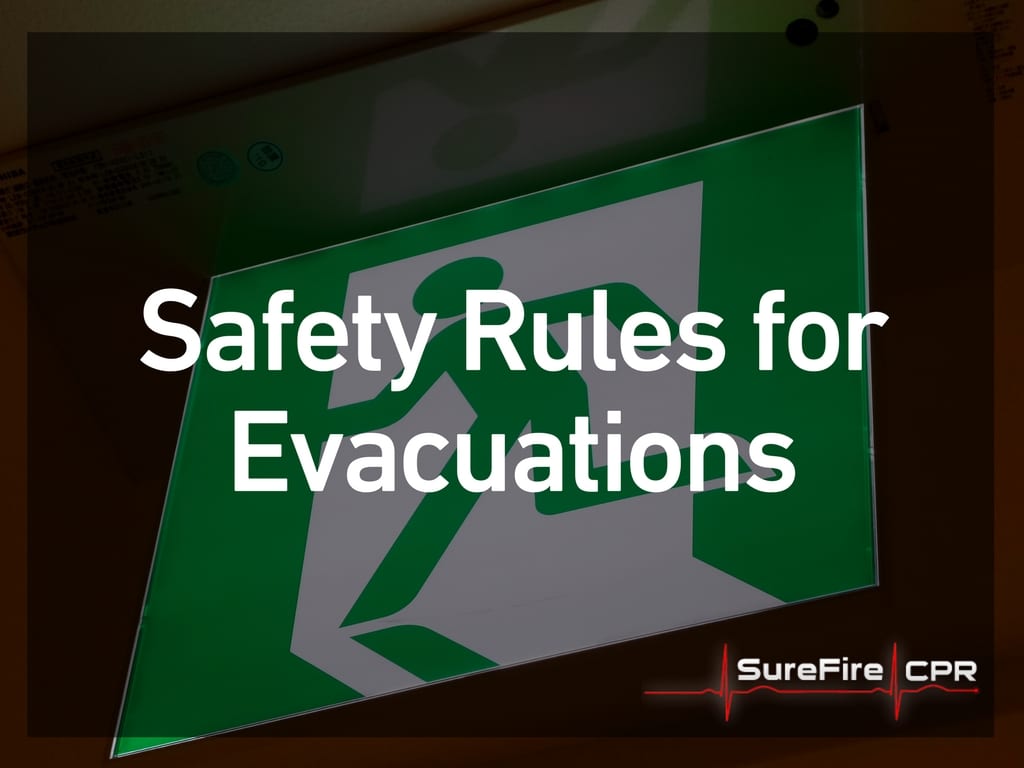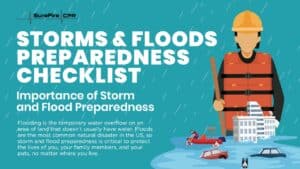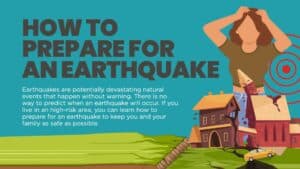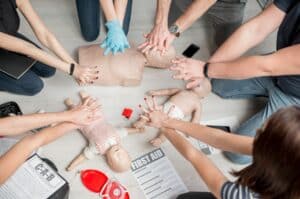Earthquakes, hurricanes and other natural disasters can cause substantial damage in short periods of time. They may even lead local officials to evacuate cities and towns to help limit the potential loss of life in these life-threatening situations.
If an emergency happens and an evacuation follows, what should you do? Ultimately, understanding how to respond to an evacuation is paramount. If you know the safety rules for evacuations, you can reduce the likelihood of accidents or injuries, as well as provide support to others until an emergency is under control.
The U.S. Department of Homeland Security (DHS) offers the following safety rules for evacuations:
-
Plan Ahead As Much As Possible
Although there is no telling when you may be forced to vacate an area, there is still plenty that you can do to plan ahead for emergency evacuations.
Some of the best ways to prepare for emergency evacuations include:
- Learn about potential natural disasters. Some communities may be more susceptible than others to certain types of natural disasters. For example, Florida is more prone to hurricanes than California; conversely, an earthquake or wild fire may be more likely to occur in California than in Florida. If you understand the different types of natural disasters that may impact your area, you can prepare evacuation plans that account for the challenges that you may encounter.
- Develop a family communication plan. Communication will play a key role in your success during an evacuation. If you have a plan in place to maintain communication with family members throughout an evacuation, you can minimize the risk that family members are separated from one another in emergencies.
- Prepare a “go-bag.” Keep a “go-bag” that you can grab at a moment’s notice. This bag should include clothing, toiletries, emergency supplies and various everyday essentials. Also, make sure this bag is lightweight and can be carried with you at all times.
When it comes to evacuations, it is always better to err on the side of caution. With a proactive approach, you can plan ahead for any evacuation.
-
Consider the Evacuation Itself
Chaos often ensues during an evacuation. However, if you consider the best ways to handle an evacuation, you can boost your chances of remaining calm, cool and collected in the face of danger.
Some of the best ways to stay safe as an evacuation takes place include:
- Follow recommended evacuation routes. Oftentimes, evacuation routes will be in place that show you exactly where you need to go. Avoid the temptation to stray from an evacuation route, as doing so can be dangerous.
- Be aware of road hazards. Washed-out roads, downed power lines and other road hazards may crop up in an emergency. Pay close attention to the road, and you can reduce the chance that road hazards will slow you down.
- Leave the area as soon as you can. Don’t wait to evacuate an area. Because the longer that you wait, the more likely it becomes that you may be left behind.
An evacuation can cause panic, particularly for those who fail to consider how their actions may impact others. Fortunately, if you think carefully throughout an evacuation, you should have no trouble remaining safe.
-
Stay in Touch with Local Officials
It is essential to keep in touch with local officials where you’re staying after an evacuation. That way, you can stay up to date about an emergency and offer assistance whenever possible.
You’ll want to maintain communication with local officials when you return home after an evacuation too. It may take many days, weeks or months to fully recover from a disaster. If you reach out to local officials, you can better prepare for potential disruptions to your daily activities until emergency recovery efforts are complete.
Furthermore, DHS provides the following recommendations to minimize risk when you return home following an evacuation:
- Let family members know when you arrive. Communication with family members is critical before, during and after an evacuation.
- Charge your devices. Recharge your devices whenever possible. You also may want to consider adding back-up batteries to your emergency supply kit to prepare for power outages.
- Avoid downed power or utility lines. Downed power or utility lines may be live with deadly voltage. As such, you should stay away and report these hazards to your power or utility company.
Evacuations sometimes involve hundreds, thousands or millions of people, all of whom want to return to their everyday lives as quickly as possible. But it is important to remember that it takes time to recover after an emergency. And if individuals work together for the greater good, they may be able to speed up the recovery process.
Lastly, education is a crucial part of emergency and evacuation preparedness, and perhaps it is easy to understand why.
With the right training, anyone can become a difference-maker in an emergency. Much in the same vein, the proper education enables individuals of all ages to provide vital support during evacuations, regardless of their size or location.
It won’t take long for an individual to learn the necessary skills to administer critical assistance in life-threatening situations. In fact, SureFire CPR of Southern California provides a variety of classes that empower individuals with life-saving skills, and our course offerings include:
- Basic First Aid: Ideal for anyone who wants to learn first aid skills, this class emphasizes important first aid topics, such as hot and cold emergencies, muscle and bone injuries and seizures.
- Cardiopulmonary Resuscitation (CPR): This class teaches individuals how to administer CPR to adults, children and infants, how to assist conscious and unconscious choking victims and how to use an automated external defibrillator (AED).
- Pediatric First Aid and CPR: Intended for parents, babysitters and anyone who cares for children, this class focuses on the four steps involved in pediatric medical crises: prevention, being safe, calling 911 and taking action.
SureFire CPR has been a leading provider of life-saving training for many years. To learn more about our classes, please contact us at (888) 277-3143.











